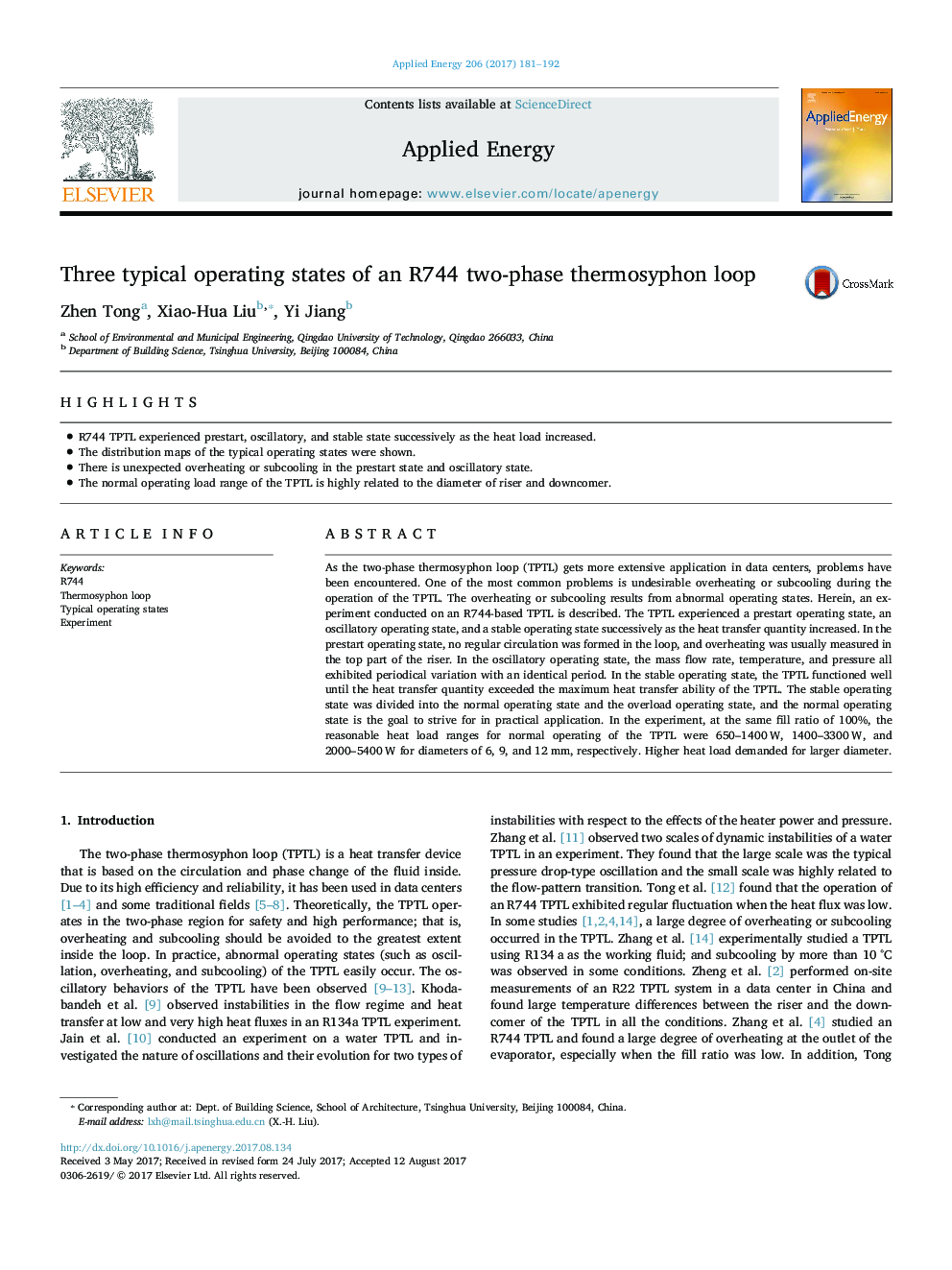| Article ID | Journal | Published Year | Pages | File Type |
|---|---|---|---|---|
| 4915670 | Applied Energy | 2017 | 12 Pages |
Abstract
As the two-phase thermosyphon loop (TPTL) gets more extensive application in data centers, problems have been encountered. One of the most common problems is undesirable overheating or subcooling during the operation of the TPTL. The overheating or subcooling results from abnormal operating states. Herein, an experiment conducted on an R744-based TPTL is described. The TPTL experienced a prestart operating state, an oscillatory operating state, and a stable operating state successively as the heat transfer quantity increased. In the prestart operating state, no regular circulation was formed in the loop, and overheating was usually measured in the top part of the riser. In the oscillatory operating state, the mass flow rate, temperature, and pressure all exhibited periodical variation with an identical period. In the stable operating state, the TPTL functioned well until the heat transfer quantity exceeded the maximum heat transfer ability of the TPTL. The stable operating state was divided into the normal operating state and the overload operating state, and the normal operating state is the goal to strive for in practical application. In the experiment, at the same fill ratio of 100%, the reasonable heat load ranges for normal operating of the TPTL were 650-1400Â W, 1400-3300Â W, and 2000-5400Â W for diameters of 6, 9, and 12Â mm, respectively. Higher heat load demanded for larger diameter.
Keywords
Related Topics
Physical Sciences and Engineering
Energy
Energy Engineering and Power Technology
Authors
Zhen Tong, Xiao-Hua Liu, Yi Jiang,
